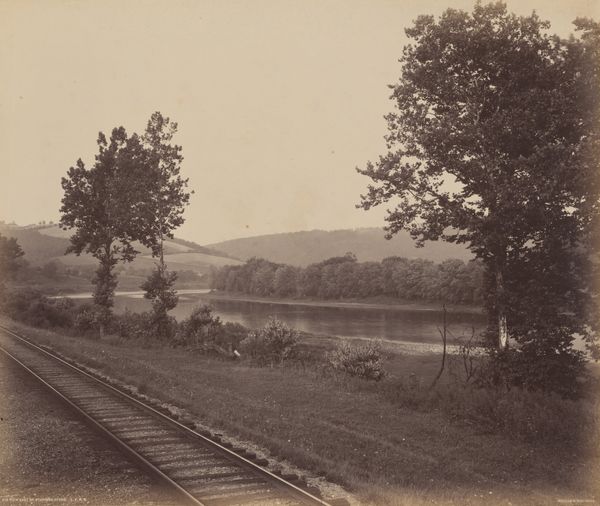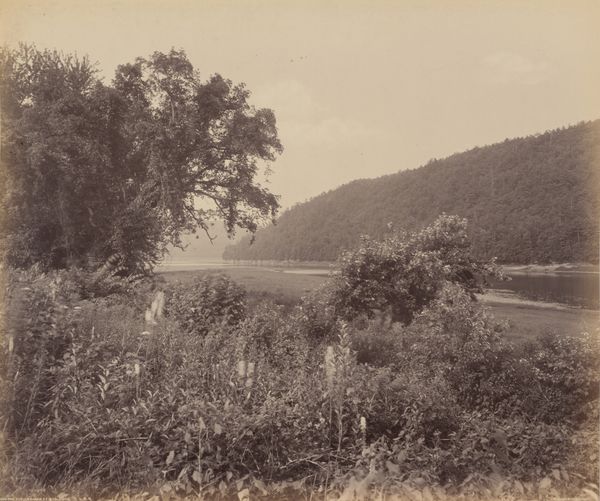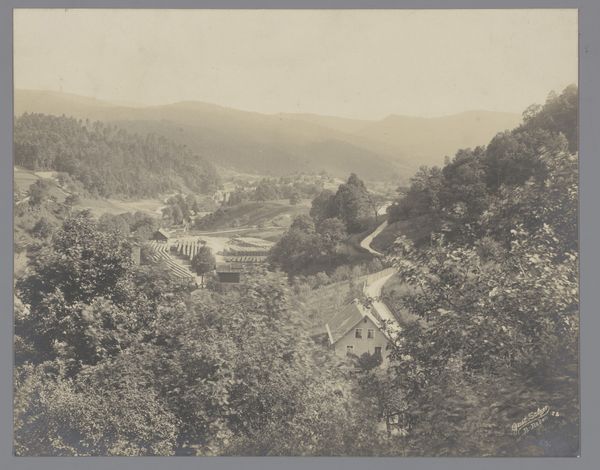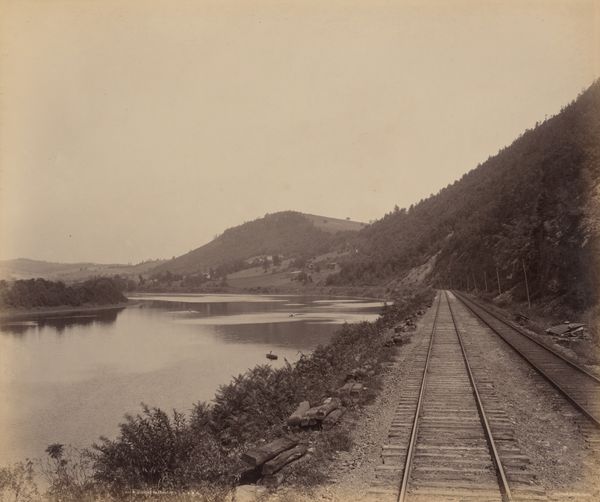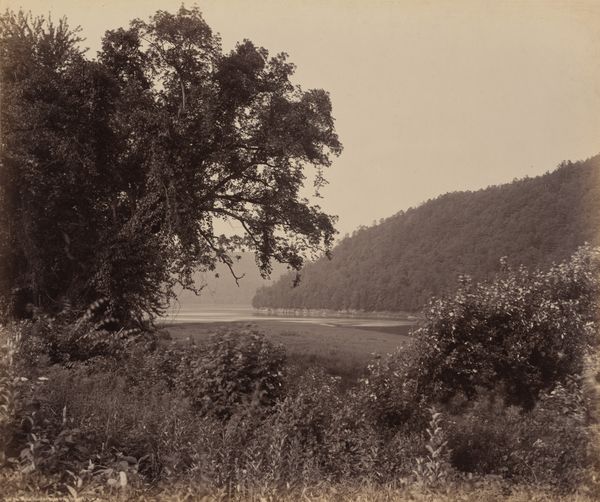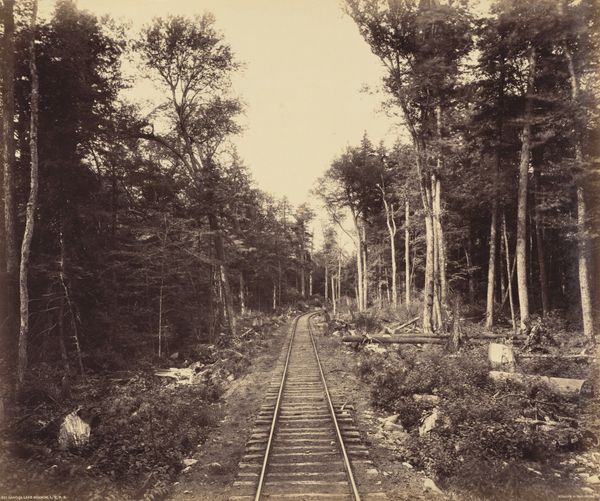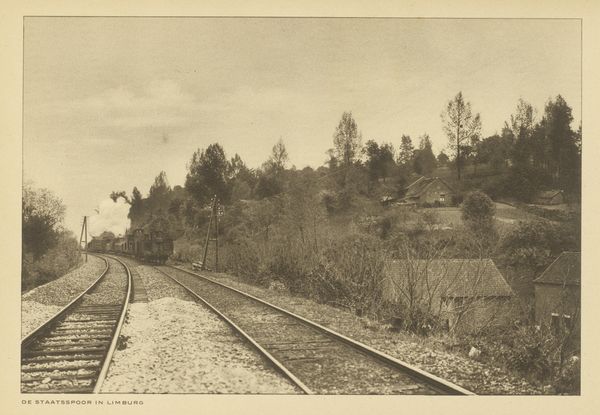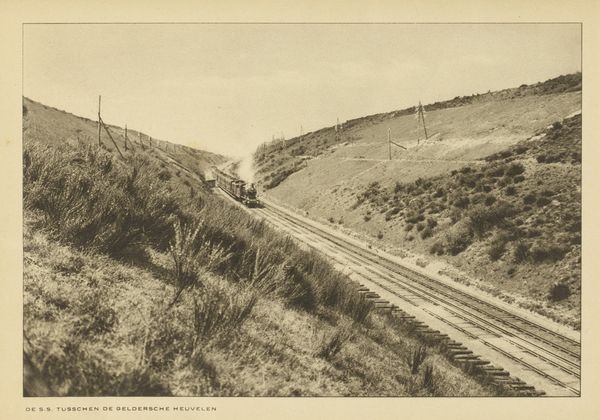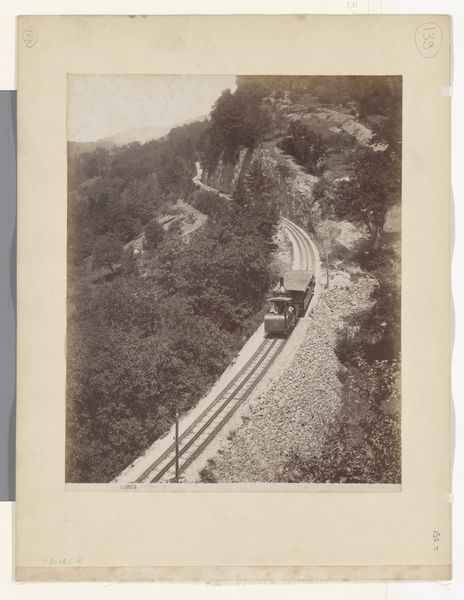
Dimensions: image: 43.7 × 52.1 cm (17 3/16 × 20 1/2 in.) mount: 49.7 × 60.6 cm (19 9/16 × 23 7/8 in.)
Copyright: National Gallery of Art: CC0 1.0
Editor: Here we have William H. Rau’s “Musconetcong Curve,” a gelatin-silver print from around 1895. I'm immediately struck by the serenity of this image. The misty light, the gentle curve of the tracks... It feels incredibly peaceful, almost dreamlike. What do you see in this piece? Curator: It’s interesting you pick up on that serene quality. It *is* undeniably beautiful. But when I look at it, I’m thinking about what that railway *represents*. A symbol of progress, of conquering the landscape... but perhaps also a disruption of that serenity you noticed. What price progress? Does that idea resonate with you? Editor: I hadn't really considered that tension. I was so caught up in the aesthetics. The sepia tones add to that nostalgic feeling, which made me overlook the impact a railway would have had on this natural setting. Curator: Exactly. Rau's work often presents these beautiful scenes, carefully composed and technically masterful, but sometimes it feels like he's holding back, isn’t it? Or perhaps simply unaware of the broader context. Now, tell me, what photographic movements does this work speak to you? Editor: Pictorialism, definitely, with its focus on aesthetic beauty and almost painterly qualities. I can see some Impressionist influences, too, in the way light and atmosphere are captured. Curator: Yes, brilliant! Rau, working at the turn of the century, was part of this exciting moment in photography when artists were pushing the boundaries of the medium. A question to contemplate is: should progress at all costs, or nature preserved in all beauty? Editor: I feel like I’m looking at this piece with completely new eyes now. It’s not just a pretty picture; it’s a question, almost a debate. Curator: Exactly. Art often asks more questions than it answers, doesn't it?
Comments
No comments
Be the first to comment and join the conversation on the ultimate creative platform.


